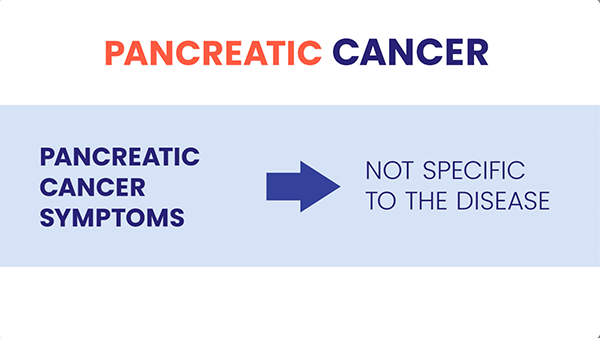Pancreatic cancer is one of the cancers with the poorest prognosis, with a 5-year survival rate of just 11%.1 Diagnosis most often occurs at an advanced stage of the disease, when the tumor can no longer be operated on as a result of the late clinical expression of the disease.
Although it only comes in 12th place for cancers diagnosed worldwide in 2020, pancreatic cancer is nevertheless the 7th most deadly². Adjusted for population, the number of new cases is increasing considerably in industrialized countries. This is particularly the case in Asia as well as in countries across Europe (France, Belgium, Germany, and in Central and Eastern Europe), North America, Australia, and New Zealand.
Although the causes are still largely unknown, smoking and excessive alcohol consumption influence onset. Diets that are high in fat and protein, obesity, and diabetes may also contribute. However, many cases occur in the absence of these factors, including in people over the age of 60. In 5% to 10% of cases1, a familial predisposition is observed. Certain gene mutations — including BRCA2 already known to be involved in breast and ovarian cancer — are also at play.
496,000
new cases worldwide in 20202.
466,000
people died from pancreatic cancer in 20202.
70.2 %
this is the anticipated increase in the global number of cases in 2040, compared with 2020, owing to the demographic trend4.
The pancreas, an essential digestive organ
A diagnosis made too late
The poor prognosis of pancreatic cancer is largely explained by its late diagnosis. The patient starts getting the first signs when the cancer is already at an advanced stage. Only 20% of patients are diagnosed with a stage that is still operable. Among them, the survival rate reaches 20% five years after diagnosis – versus 5%1 for all stages combined, whether operable or not.
Among others, symptoms include a loss of appetite, weight loss, and stomach pain, which can extend to the sides and the back. If the tumor affects the head of the pancreas, it causes compression of the common bile duct, which carries bile from the liver to the intestine. Bile then flows back into circulation, resulting in a yellowing of the eyes and the skin (jaundice), dark-colored urine, and sometimes itching of the skin.
Diagnosis relies on imaging, first with an abdominal ultrasound, followed by a CT scan. This helps determine the size of the tumor and its possible extension in the form of metastases, towards the ganglia, liver or bones. The diagnosis is confirmed by tumor analysis in the case of operable tumors, or biopsy, for inoperable tumors.
Surgery, the only potential cure
The decision to operate on the patient depends on the size and location of the tumor, as well as the general condition of the patient (age, other diseases). When the head of the pancreas is affected, a surgical procedure known as the “Whipple procedure” is performed. It removes not only this section, but also those located nearby such as the common bile duct, adjacent sections of the stomach and intestine. It is major surgery that is not proposed to all patients.

Chemotherapy, a therapeutic alternative
Chemotherapy is systematically used in patients with pancreatic cancer, whether they have been operated on or not. The medicines employed stop cells from proliferating. They target rapidly dividing cells, whether cancerous or not – which explains the side effects of such treatments.
After surgery, chemotherapy is described as “adjuvant”: it seeks to eliminate residual cancer cells, and thus prevent relapse. In some cases, it can be performed before the operation, in order to reduce the tumor to an operable size. In this case, it is referred to as “neo-adjuvant”. When surgery has not been performed, chemotherapy helps control the tumor and alleviate symptoms. When the disease is at an advanced stage, it is most often based on the combination of several drugs to combine their actions.
Radiotherapy can also be used, in combination with chemotherapy, when the tumor is locally advanced but not operable. It may even be used to treat bone metastases, which are often painful.
In 20% of cases, chemotherapy may be combined with some targeted therapies. For patients, this means that they receive personalized treatments.
REMEMBER

About Servier
Guided by the needs of patients, we aim to bring therapeutic innovations to the development of treatments targeting hard-to-treat cancers. Specifically, these include digestive cancers (gastric cancer, pancreatic cancer, cholangiocarcinoma, a rare and aggressive biliary tract cancer), glioma (brain tumors), hematologic cancers (acute myeloid leukemia, acute lymphoblastic leukemia, lymphomas) or pediatric cancers.
We are focusing our R&D programs on two approaches: immuno-oncology and targeted therapies.
We have strengthened our cancer research ecosystem with Symphogen, our center of excellence for monoclonal antibodies in Denmark, and with our R&D center in Boston, USA. The latter center focuses its research activities on the development of innovative cancer treatments.
1Source: American Cancer Society. Cancer Facts & Figures 2023. Atlanta: American Cancer Society; 2022.
2Source: International Agency for Research on Cancer, Globocan 2020, WHO.
3 Long-term illnesses Illnesses (ALD) Guide, pancreatic Pancreatic cancerCancer, November 2010, French National Authority for Health (HAS).
4Source: The Global Cancer Observatory, International Agency for Research on Cancer, 2023.

